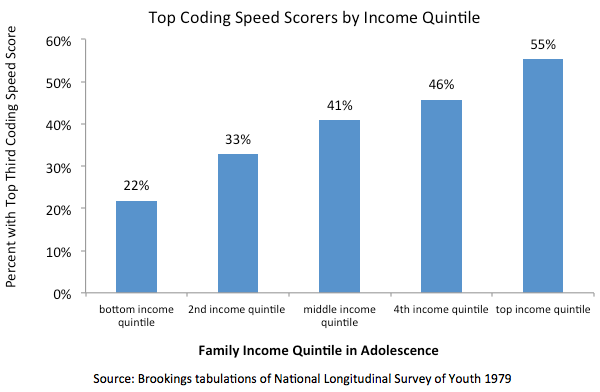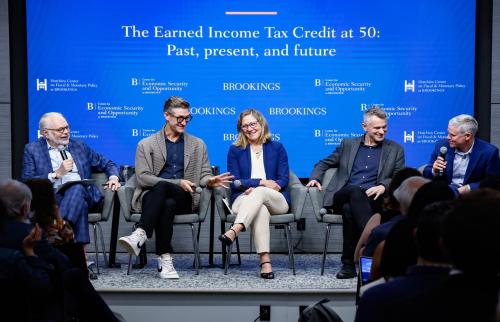Social mobility is influenced by a kaleidoscopic array of economic, social, education and individual factors—including character strengths.
James Heckman’s pioneering work has opened up a new field of study, connecting the development of “non-cognitive skills” to broader concerns about economic inequality, persistent poverty, and intergenerational social mobility. Paul Tough’s book How Children Succeed has drawn wider attention to these connections. (Our new project, with an advisory panel including both Heckman and Tough, will examine the links between character and opportunity.)
Measuring Motivation: The Coding Speed Test
Measuring character strengths is an empirical challenge. But data are available. One important strength is the ability to persist with a task even if—especially if—it lacks any obvious reward. Professor Carmit Segal (another of our advisers) shows how performance on a coding speed test, when taken with no incentive to do well, predicts adult earnings for male participants over 20 years later, controlling for cognitive skills.
The test first provides a long list of words and associated numbers:
game = 2715
chin = 3231
house = 4232
Then the words are listed again, with a multiple choice of five possible answers:
house = a) 4232 b) 2715 c) 3231 d) 4563 e) 2864.
The test is absurdly easy, but spine-crackingly dull.
Under certain circumstances, the test measures effort, not brains. Those who do well on it do better in life, regardless of scholastic abilities. Indeed, for those without a college degree, the coding speed score predicts adult earnings as reliably as cognitive test scores. An inclination to try hard, despite no obvious extrinsic motivation, turns out to be important in the labor market.
Wide Class Gaps in Motivation
If the coding speed test is capturing an important character strength—motivation, grit, or persistence—an important question is whether there are gaps by social or economic background. It seems so. Adolescents with more affluent backgrounds demonstrate higher levels of motivation, as measured by the coding speed test:

Motivation and Class: What’s the Link?
Why, on top of all the other advantages enjoyed by more affluent teenagers—school quality, parental education, health, and so on—are they also ahead in terms of motivation?
Two obvious possibilities:
- Affluence creates motivation. Affluent youngsters may be accustomed to seeing their effort pay off, and so have learned to try hard. They’ve learned that sticking with a task brings rewards, in terms of esteem, parental approval, and more opportunities.
- Motivation creates affluence. It is also likely that highly-motivated individuals will be strongly represented at the top of the income distribution, and may also instill similar strengths in their own children.
Of course, there are gaps by family income on almost all measures: cognitive test scores, health, parenting, even height. If our analysis is correct, character strengths can simply be added to this long list. But, as we’ll argue later this week, there may be good reasons to pay a little more attention to character strengths, not least in relation to social mobility.
Note: We presented the low-stakes coding speed test as a measure of character, but should have been more careful with our labeling. Coding speed only measures intrinsic motivation on a short term, simple task; it is not a measure of grit or persistence which are exhibited with long-term commitment.
The Brookings Institution is committed to quality, independence, and impact.
We are supported by a diverse array of funders. In line with our values and policies, each Brookings publication represents the sole views of its author(s).





Commentary
Character Gaps and Social Mobility
March 18, 2014